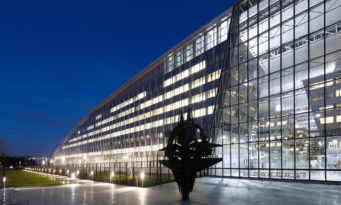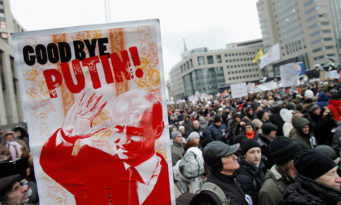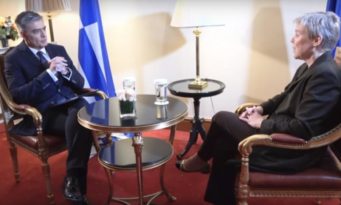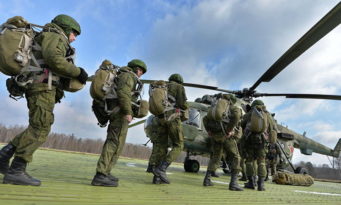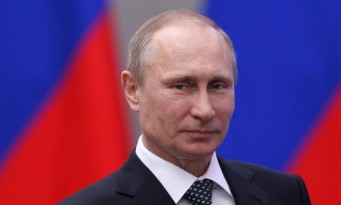Top US General: We need a Military Schengen Zone Inside NATO
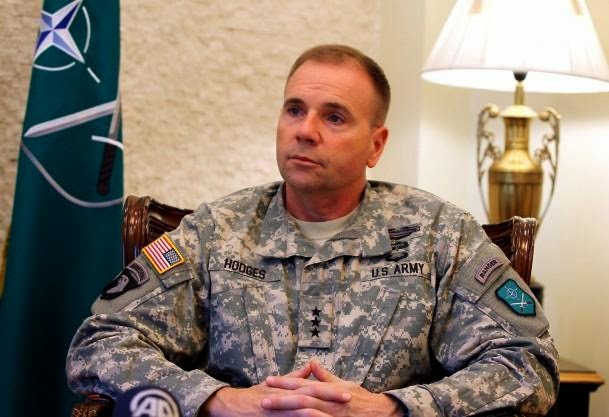
- By defencematters
General Ben Hodges, commander of US Army Europe spoke with Defence Matters about the emerging challenges that NATO needs to address in the context of the next year Warsaw summit.
Octavian Manea
On the margins of the CEPA Forum (the leading annual transatlantic security conference inWashington, DC.), General Ben Hodges, commander of US Army Europe spoke with Defence Matters about the emerging challenges that NATO needs to address in the context of the next year Warsaw summit. In this context, he emphasized that the access-denial capabilities deployed in Kaliningrad and Crimea are a threat for NATO’s freedom of movement on the Eastern Flank. At the same time, a key component of NATO deterrence capital is about speed particularly, speed of recognition of what is going and speed of assembly of military forces to preempt a crisis.
Let’s discuss the impact that the A2/AD bubbles (in Kaliningrad and Crimea) pose for the defense of allies. In the end the highly permissive assumptions of the 1990s (related to air and sea access) can no longer be taken for granted.
If the Russians are able to deny the access into the Baltic and Black Seas then potentially this creates a situation where if they thought the Alliance would not respond they might miscalculate and choose to go after the part of one of the Baltic countries for example. That is not likely. I don’t think they will do that because I am sure that they don’t want to have a fight with NATO. For that reason I call this a miscalculation. Of course, at the same time, nobody I know expected them to go and invade Crimea. For this reason we need to prepare. It is how you deter. If you have capability and demonstrate the capability that is how you deter.
And when you think to the Black Sea you have 3 NATO countries (Romania, Bulgaria and Turkey) and then the Danube River that goes through 6 different NATO countries and empties in the Black Sea. So, if the Russians deny access into the Black Sea then you are talking about affecting the economy of several NATO countries. That really matters.
Should the Alliance operate, reinforce and deter differently because of the access/denial challenge in Kaliningrad and Crimea?
The first thing that we’ve got to continue, is doing what the Navies of all of our countries always do which is to continue to assert freedom of the seas. US Navy and all the NATO navies need to continue moving in international waters. However if we have an emergency and Russia doesn’t allow access into the Baltic Sea we will have to find another way to re-establish access because of the risks to our allies and friends around the Baltic Sea.
Is deterrence by denial the way to approach the defense of the Baltic states and the whole Eastern Flank? I like this quote from George Kennan that I think captures this spirit very well: “we must be like the porcupine who only gradually convinces the carnivorous beast of prey that he is not a fit object of attack”.
That is a very good definition of deterrence. It is by showing strength that a potential adversary chooses not to be aggressive. That is what we have advocated from the beginning. The unity of the Alliance, the unity of the EU is an important part of this. But also having a balance. We don’t want to be just a hedgehog. We need Russia in the global community. The balance is about showing strength but in a way that is reversible, that keeps the doors open and we don’t lose all the points of contact so when we get to the right place we can resume the relationship as we had before. Secretary Carter calls this strong but balanced. The strength has a material component: having the equipment, having the units demonstrating the capabilities of ground, air and sea formations. But another very important part of achieving that deterring effect is speed, speed of recognition of what is going on, speed of decision by military, by political leaders to do something and speed of assembly in order to preempt a situation or a crisis. For example the purpose of the VJTF is that the alliance has a formation that can move very quickly to a point so we don’t have to do a counter-attack. So speed will give our political leaders options. General Nicholson, the Commander of Allied Land Command (LANDCOM) said it very well: strength matters and speed matters. Strength is about capability, speed is about how fast you can identify a potential crisis, how fast you can make decisions and I don’t mean necessary all 28 nations, but it could be bilateral or multilateral, but nonetheless people recognize that something may be happening and it matters how fast can you get there. So that leads to the importance of freedom of movement, the ability to move from country to country.
How do you ensure access to the Baltic states in an environment where some of the old traditional assumptions can no longer be taken for granted. Air and maritime access can be denied from Kaliningrad. How does the Suwalki Gap factor into this because it seems to provide the critical land access element for reinforcement?
It is a potential challenge because of this narrow land feature between Kaliningrad and Belarus. If Russia chose during a snap exercises to close it we would have a serious challenge because they would have to invade either Poland or Lithuania to do that. I don’t think that is a likely scenario, but it is a plausible one and one that we want to prevent. The way you prevent it is by demonstrating capability so that means we have to continue to demand freedom of movement through the Baltic Sea, we have to continue to exercise movement back and forth between Poland and Lithuania up to Latvia and Estonia. I think we need to have a kind of a military Schengen zone inside NATO where military forces should have pre-arranged coordination that allows us to move quickly back and forth inside the alliance. That is necessary not only for VJTF, but for any formations. In this way we can give to our political leaders some options. Right now it takes two weeks notification to move from Poland to Lithuania, which is not sufficient to ensure freedom of movement. Even with VJTF it still takes two weeks and that is not fast enough. When you leave Poland and Lithuania you change from the European standard to the Russian standard and it will take a couple of years before the new rails will be in place in the Baltic countries. This is all part of deterrence: having the ability for speed, speed of recognition of what is going on so investing in indicators and early warning capabilities and speed of assembly of military forces for the alliance so that we can give to our political leaders options versus having only one option that of a counter-attack.
But the A2/AD capabilities can keep out the potential reinforcements by creating the so called keep out zones. How can we counter-balance such a threat?
That’s the risk posed if we don’t counter it and the counter measures include exactly what we are doing: we are putting equipment in the Baltic states and Poland, the so called European Activity Sets (there will be some in Romania, Bulgaria as well in Germany and Hungary). So having equipment there is not a lot, but it is enough to guarantee that American soldiers could get there very quickly. That’s why the speed of recognition is so important.
Usually we don’t connect the A2/AD aspect with the hybrid warfare. Can we envision a scenario where hybrid tactics can be used under an A2/AD umbrella?
Yes. I don’t separate them at all. What is hybrid warfare? It is the use of information and deception to obscure what it is what you are trying to do. Ultimately, hybrid warfare could include the use of large conventional forces, but in the beginning it is about deception, misinformation, about little green men with no shoulder patches, it is about the using of special forces to create problems, about twisting the law and issuing Russian passports to anybody who spoke Russian and then declaring them as Russian citizens that need to be protected, about violating air spaces. This is all about hybrid warfare and so to deny access into an area or to demonstrate the ability to deny access into an area fits into the overall intimidation aspect of the hybrid warfare.
How do you see the role of land-power in this very A2/AD contested environment?
First of all, all the people of the world live on the land. So you are always going to need land-forces to protect populations, to protect critical infrastructure. Land-power is a part of a joint effort. We always had powerful and very effective air forces and far reaching navies. Those are important and land-power is a part of that because that is how you interact with people and if you have to go into a built-up area and you are trying to avoid civilian casualties you are going to have soldiers that do that. And frankly nothing demonstrates commitment as much as having people that are actually there. Nothing like having boots on the ground and forward stationed soldiers sends the message.
Permanent basing on the Eastern Flank of combat forces is a very sensitive issue especially in Western Europe. Is it possible to maintain the momentum to permanent-ize the rotational presence?
We are going to stay doing what we are doing for as long as our allies ask us to.
Lt. Gen. Ben Hodges graduated from the United States Military Academy in May 1980 and was commissioned in the Infantry. His most recent operational assignment was as Director of Operations, Regional Command South, in Kandahar, Afghanistan. His last assignment was as Commander, NATO Allied Land Command from 2012 to 2014.






